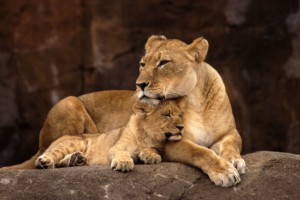I’m a little bit obsessed with something called Orangetheory Fitness. I’m not entirely sure what the theory is, or the hypothesis, for that matter.
By Stacey Ludlum, Director of Zoo & Aquarium Planning and Design, PGAV Destinations.
 I’m actually not the biggest fan of the orange lighting either, but somewhere in that orange morning haze, I get caught up in pushing and going all out, and increasing my weights and watts, and beating my neighbor to the next round of run / row’even though I’m so freaking tired and today I’m just gonna take it easy’
I’m actually not the biggest fan of the orange lighting either, but somewhere in that orange morning haze, I get caught up in pushing and going all out, and increasing my weights and watts, and beating my neighbor to the next round of run / row’even though I’m so freaking tired and today I’m just gonna take it easy’
Needless to say, I am the target market for the boutique fitness craze: ambitious, slightly competitive, leading Millennial (okay, fine’Gen Xer), with a few extra dollars burning a hole in my pocket. But what is it about this particular activity that gets me to be so Brand Loyal? Other brands I’m loyal to give me perks like a free chai latte, free hotel nights, or free flights. But Orangetheory doesn’t do that. In fact, it does the opposite’charging me an expensive monthly fee AND an exorbitant fee for no-showing to class. It punishes me, if anything. So what was is it about this brand that has me so hooked, dragging myself out of bed at 4:30am four times a week for a brutally intense work-out?
The ‘other’ compeititors
In our latest Destinology report, “The Fight for Attendance“, we explored the appeal of a few of the major non-traditional competitors that destinations have to battle. We usually think of competition for attractions as other attractions; zoos‘ competitive market are other animal attractions within a couple of hours drive, or even nationwide. Museums deal with competition from other museums within a city. We all deal with competition from each other, and from the multitude of play-based attractions like splash pads, mega-playgrounds, and family entertainment centers. But in today’s world, we’re competing against a few others: Sports (which have long been a competitor), Streaming Services, Board Games (and although Destinology didn’t touch on it, Video Games, too), Fitness, and Festivals.
Each of these has their own special characteristics that draw millions of loyal participants. As different as they all are, there are some shared attributes (although some are admittedly contradictory).
1. Community
The most prevalent attribute among these activities is the ability for participants to feel they are part of a community. As disconnected we all feel from time to time (even before we became “more” connected via social media), we are social creatures and we crave time in the company of like-minded others, focused on achieving the same mission. Think about the student sections at a men’s college basketball game! Even today’s festivals are centered around a common theme, be it EDM or mac n’ cheese. It’s fair to assume that anyone in attendance has at least a mild appreciation for the festival topic. Feeling as if you are amongst friends is extremely freeing and oftentimes very relaxing.
2. Value
Value doesn’t mean something is inexpensive. It does mean that it provides a lot for the price. What that means varies from person to person, but usually it includes providing a special experience, or providing a preponderance of extras.
Professional sports suffers from a perception of lack of value. That’s because the ticket price is usually high, but doesn’t include anything extra. A beer is $10, and you’re crammed into a tiny plastic seat with your knees in your chest or in someone’s head and you have to stand up every time someone needs to pee and you drop your jacket or your program and then your team loses. On the flipside, I can buy a board game for the same (or less) price of a single ticket to a ballgame and be able to have a weekly game night with three of my best friends for months on end. And hopefully no one has to get up for me to go pee.
3. Comfort
 I’m a big fan of streaming services. Why? Because I can sit on my sofa with my cats, binge-watch House of Cards all weekend, and no one will know unless I tweet about it. That’s comfort. Board games offer a similar level of comfort. Hanging out at home or at your friends’ house in your slippers drinking beer and eating Cheetos has a fairly collegiate nostalgia. And nostalgia is a fuzzy soft bathrobe with matching blankie.
I’m a big fan of streaming services. Why? Because I can sit on my sofa with my cats, binge-watch House of Cards all weekend, and no one will know unless I tweet about it. That’s comfort. Board games offer a similar level of comfort. Hanging out at home or at your friends’ house in your slippers drinking beer and eating Cheetos has a fairly collegiate nostalgia. And nostalgia is a fuzzy soft bathrobe with matching blankie.
4. Variety
The ability to change your mind, or to legitimize our short attention spans is definitely appealing. Binge-watching is a result of variety. I want to get in, and get out as quickly as possible so I can move onto the next thing. How many times have I seen friends on Facebook ask the greatest question of our generation: “What should I be watching on Netflix that I haven’t already seen?” It is this variety that may be driving the Festival boom as well. Short-term inundation and non-commitment are common themes.
5. Exclusivity
As much as we want to be part of a community, we also want to be unique and special. And if that exclusivity brings a certain value to it, all the better. I am totally willing to spend the extra $100 on VIP admission to a Festival or the Sports game if I get a nice, comfortable place to sit with an incredible view of the action’along with unlimited delicious food and adult beverages, of course!
6. Accomplishment
The feeling of accomplishment should not be underestimated. It is the primary driver for the fitness craze, and likely a motivator for the resurgence of board games. American society is deeply goal-driven, which makes for a whole lot of workaholics, but also makes for a fairly simple to achieve marketing attribute.
7. Control
In this case, were talking about the ability to have what you want, when you want it. It is exemplified with streaming services and other on-demand options. We no longer are a slave to the TV Guide. We are our own publishers of TV. Other on-demand options for consideration at attractions include pre-ordering food for pick up, or online ordering for delivery. Think about that new dine-in theater you love with the big comfy seats and wait staff. Now think about that at your planetarium!
8. Interactivity
Surprisingly, interactivity was not as big of a component with these particular competitors as you may think. Gaming is highly interactive, of course, and the potential for interactivity on streaming platforms is very interesting, but in the big scheme of things, everything we do these days is so interactive (my phone is a’phone?), oftentimes we just want to sit back, relax, and have the thinking done for us. Honestly, that’s definitely one of the reasons I love boutique fitness so much. I don’t want to have to think up a workout, and motivate myself, and actually do the workout all at once. Having someone else plan the workout for me, and yell at me to go harder, allows me to focus on what I need to do: get 45 splat points.
What do we do with all of this information?
One possibility is to simply piggyback on today’s hottest trends. Festivals are a smart solution for many destinations, because they provide temporary peaks in attendance. Zoos have known for quite some time about the value of Halloween and Christmas light events in boosting attendance during the traditionally off-peak season.
However, the addition of other specialty events is a relatively new endeavor. Think strategically about target markets and attendance boosts at lagging times. Keep in mind the growth of the “adults without kids’ market at zoos and aquariums, and remember that afterhours events, especially weekend afterhours events featuring live music, food, and alcohol, will appeal to that particular market segment.
What about daytime events? Halloween and Christmas events usually occur on the weekends, but don’t forget about the stay-at-home moms during winter trying to keep little Ricky entertained indoors. Cabin fever gets moms with very young children to come out, even in the cold, so think about strategic events targeting the 0-5 year old market during the weekdays. And if you’re in a cold climate, why not make those events indoors!
Brand theming?
Other ideas include game nights and fitness events at your destination. Theme them to your brand: Dungeons & Sea Dragons has a nice ring to it! Yoga with the Lemurs, or 5k Run like a Cheetah works well, too. What about a binge night watching the latest release of Stranger Things in your invertebrates gallery? Or, better yet, invite the local NFL team for a night of Ballers (double hit with Sports & Streaming)? If you do that one and are able to get the Rock to attend, please be sure to invite me.
Ultimately, understanding the characteristics of popular activities that compete for time with your destination can also help you in the development of new permanent programs and attractions. Many of these characteristics are not new or unique, but may be new and unique to offer in conjunction with your attraction. Keeping it exclusive and creating a community builds loyalty with memberships’why not build some high-end extras into your destination which build that base even more? Luxury welcome center, VIP seating at shows, front of the line access into attractions, maybe even table service at dining areas. Applying the above characteristics to new amenities should improve attendance and build brand loyalty.
I’m also obsessed with beating Felicia at Cyclebar. But that’s for another day.








